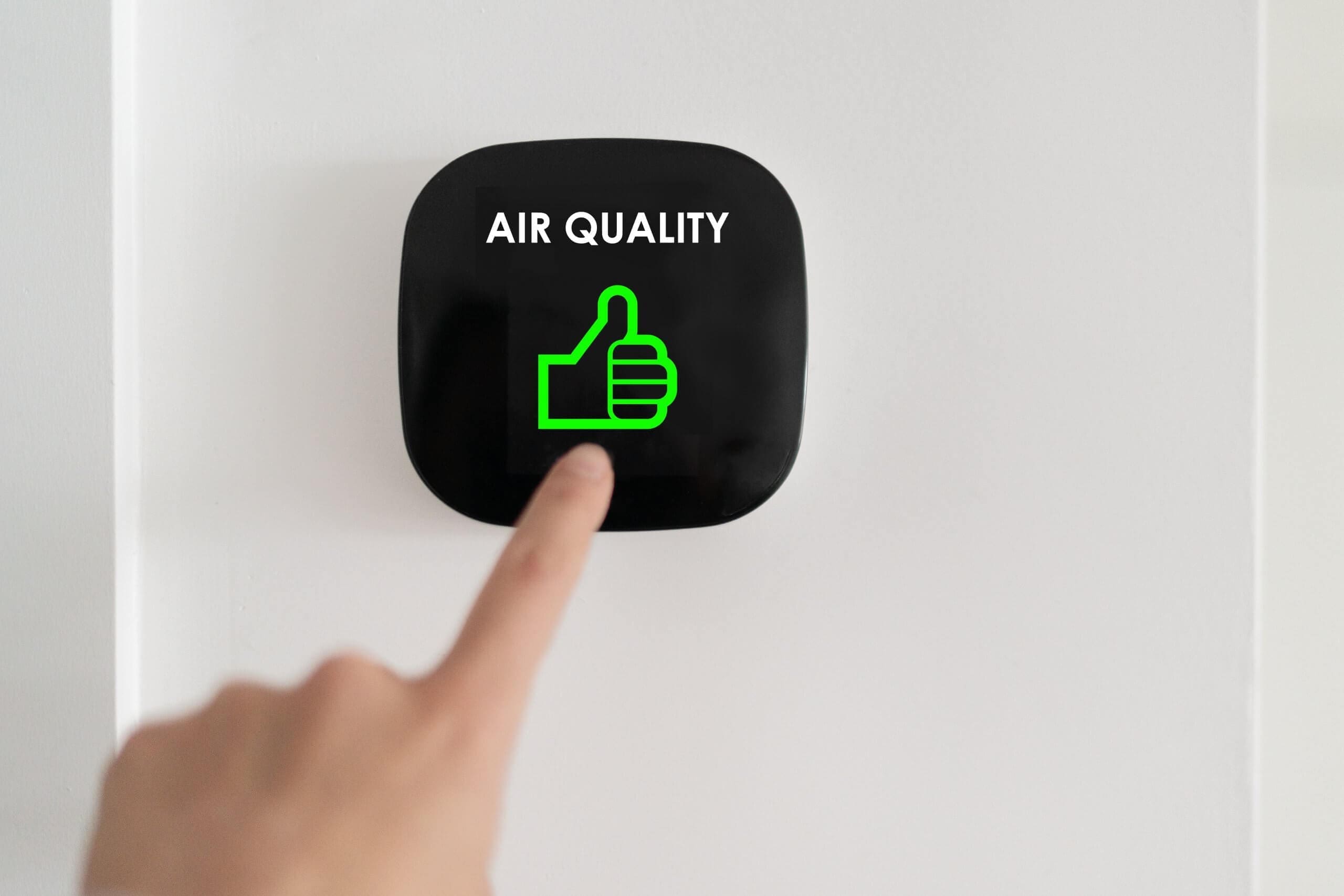When we exhale, we release carbon dioxide, or CO2, into the air. This is a necessary part of the respiratory process. Despite our ability to produce and expel carbon dioxide, we cannot inhale large quantities without consequence.
Carbon dioxide levels outdoors range from 250 to 400 parts per million, while indoor levels range from 400 to 1,000 parts per million. Exposure to carbon dioxide levels higher than 1,000 parts per million results in drowsiness, headaches, poor concentration, increased heart rate and nausea. Exposure to extremely high levels, like higher than 40,000 parts per million will result in coma, permanent brain damage and death.
That being said, CO2 levels are a helpful indication of indoor air quality. Hence, the newfound popularity of CO2 monitors throughout the COVID-19 pandemic. Homeowners, businesses, healthcare professionals and large venues alike have invested in CO2 monitors as a method of monitoring indoor air. But why?
How Do CO2 Monitors Work?
Due to the fact that carbon dioxide is a colorless and odorless gas, it’s difficult to detect without specialized equipment. Carbon dioxide monitors use non-dispersive infrared sensors, electrochemical sensors or metal oxide semiconductor sensors to detect the elusive gas. When the monitor detects a certain amount of carbon dioxide, the sensor is triggered.
Some citizen science this morning. We took our new co2 monitor for a spin this morning as my partner and I worked out in our basement. Baseline 800 ppm, doubled within a few minutes. pic.twitter.com/a7T4tXpdlY
— David Fisman (@DFisman) September 3, 2021
In addition to more alarm-type models, portable or personal devices offer greater insight as they report back real-time indoor carbon dioxide levels. These handheld CO2 monitors rapidly grew in popularity during the reopening phase as businesses and public spaces looked to increase IAQ information and data.
Indoor Levels of CO2 and How It Relates to IAQ Problems
Scientists have shown that COVID-19 spreads via aerosols when infected individuals breathe, talk, sing or scream. These are the same actions that release carbon dioxide into the air. Experts have maintained that the safest interactions are those that occur outdoors because of better air movement and circulation. By investing in CO2 monitors, all sorts of indoor spaces and establishments are able to monitor CO2 buildup in real-time. The benefit: awareness of indoor CO2 levels provides a better idea of indoor ventilation, fresh air turnover, filtration efficacy and thus the probability of transmitting COVID-19 in the space.
As a helpful rule of thumb, the higher CO2 levels, the higher the level of all sorts of indoor air pollutants. After all, dilution is the solution to pollution. Increased air circulation via ventilation and helpful effective air cleaning methods reduces indoor air contaminants. All of these IAQ problems relate to CO2 monitors because any knowledge of indoor pollution levels provides greater insight.
The Benefits of Monitoring Indoor Air Quality
Monitoring indoor air quality will alert you to the presence of VOCs, ozone, radon, carbon dioxide, carbon monoxide, dust, mold and all sorts of indoor pollutants! And, monitoring indoor air quality will provide you with important climate or thermal comfort information such as the temperature, humidity level and air pressure rate. This knowledge will provide you with the opportunity to address indoor air quality issues before they become unmanageable.
For example, if you or a family member suffers from allergies, asthma or another respiratory illness, monitoring indoor air quality potentially allows you to address the source(s) exacerbating symptoms.
Why Are IAQ Monitors More Effective Than CO2 Monitors?
While carbon dioxide monitors are effective and efficient, indoor air quality monitors have the upper hand. The best indoor air quality monitors have the capacity to:
- Provide climate information including room temperature, humidity levels and air pressure
- Detect elevated levels of chemicals and particles
- Indicate the remaining lifespan of your air filter
- Create monthly reports that show long-term indoor air quality trends
This information is pertinent to your well-being and the well-being of those around you. Without this information, it is nearly impossible to detect and address indoor air quality issues on your own. IAQ issues that can significantly impact mental and physical health! After all, why would you want to monitor just one indoor air quality issue?
Demand for CO2 monitors is really a demand for greater knowledge, awareness and control of one’s own indoor space. A whole-home in-duct central air quality monitor provides the perfect step up from CO2 monitors.



